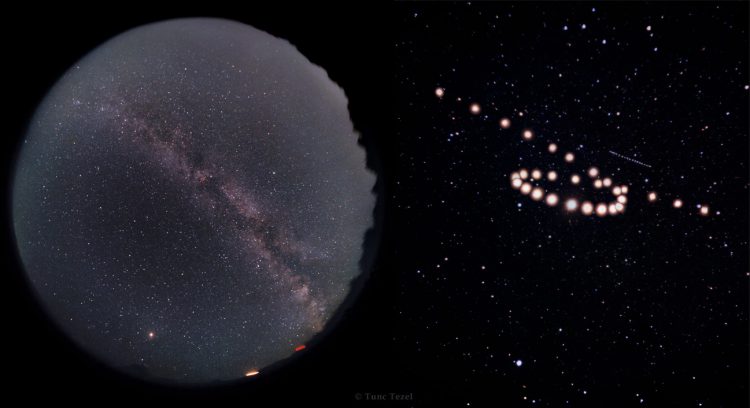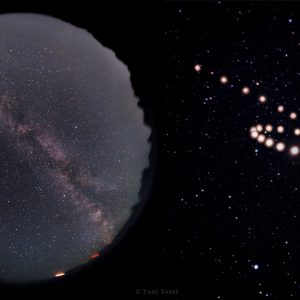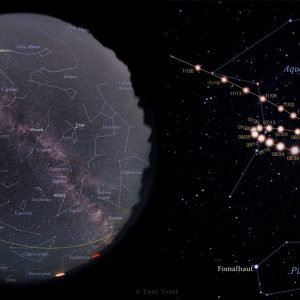Retrograde Mars
Description
As seen on Astronomy Picture of the Day the motion of Mars in the Earth sky during the course of almost 6 months is captured on the multi-exposure digital composite shown on the right. This sequence follows Mars from June 2003 (right) through the end of the year (left). The images are spaced some 5 to 8 days apart and they trace the retrograde motion of Mars in the Earth’s night sky. The single-exposure all-sky image was taken from Uludag NP during to its news-making opposition in August 2003. It shows Mars shining at magnitude -3, when it made a record for its closest distant to the Earth in about 60,000 years. Move the slider on the image to see labels, figures, and dates on the both images. The annotated picture can better show Mars lying many degrees south of the ecliptic, which is also faintly marked with Zodiacal Band and Gegenschein.
Why would Mars appear to move backwards in the sequence? Mars do not actually reverse the direction of its orbit. Instead, the apparent backwards motion with respect to the background stars is a reflection of the motion of the Earth itself. Retrograde motion can be seen each time Earth overtakes and laps planets orbiting farther from the Sun, the Earth moving more rapidly through its own relatively close-in orbit. About every two years the Earth passes Mars (during opposition). At this time Mars appear to trace out a loop in the sky (or “Z” form trace). At the top of the loop is when the Earth passes Mars and the retrograde motion forms. Retrograde motion appears on the Solar System planets. In fact, by coincidence, the dotted line to the right of the image center is Uranus doing the same thing. TWAN photographer Tunc Tezel has a special interest to capture long-term motions of the planets in the night sky and his collection of Mars retrograde motions made in the last two decades is a unique effort.




comments (0)